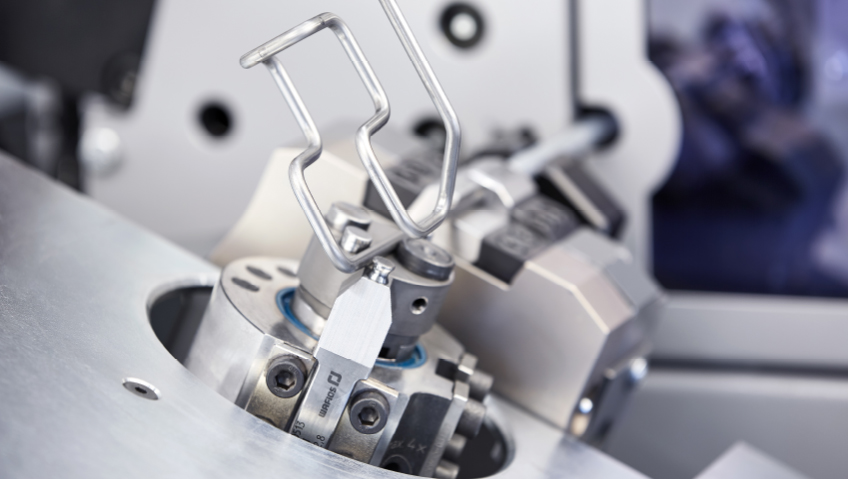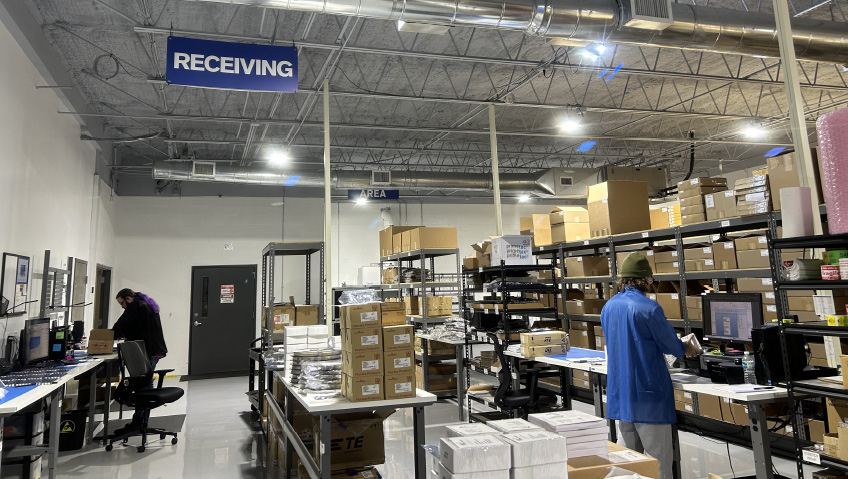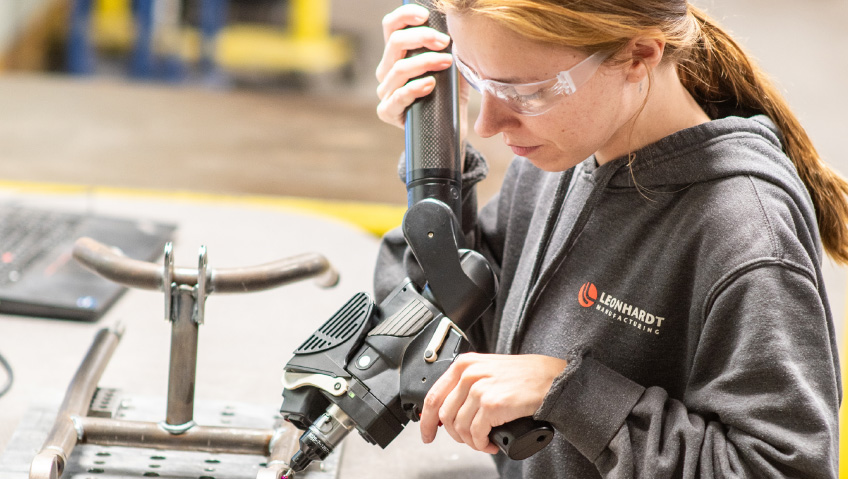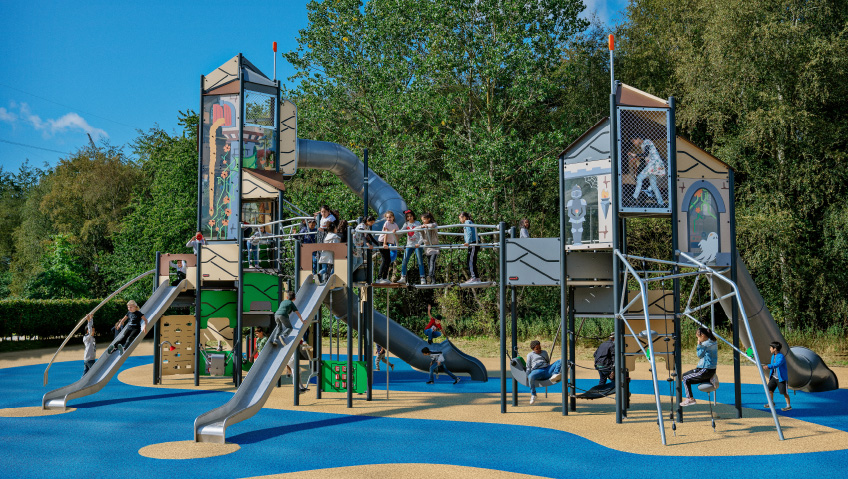WAFIOS Machinery Corporation is the North American subsidiary for WAFIOS AG and has had a presence in the U.S. since 1958, starting out in Hackensack, New Jersey and eventually moving to Connecticut in the 70s.
The WAFIOS history stretches back to 1893, when the business was first established in Pfullingen, Germany. Over the next 130 years, the company grew to become the leading global supplier of precision machinery for wire, tube, and formed parts.
Today, the company manufactures more than 120 models of wire and tube working machinery and, in addition to its German-based global headquarters, has facilities in the United States, China, Brazil, France, and Mexico. Manufacturing in Focus sat down with executives of the North American subsidiary, to learn more.
How has the company grown and thrived for nearly a century and a half? “In general, the success and the growth of WAFIOS lies in being a technology leader and the diversity of different machines here,” says President Markus Arnold. Machinery manufactured by the company is used around the globe to produce a startling variety of wire articles, from tiny surgical components to high tensile chains, roofing screws, automotive valve and suspension springs, seat frames, wire forms, and much more—most recently, formed electric motor and E-Mobility parts.
“These machines are used in various industries,” Arnold says. “This variety of machines has helped us, throughout all the years, to maintain a growing level of business in North America as industry and markets have changed.” Achieving this level of product diversity is challenging.
“Having such a wide group of machinery is a blessing and a curse to a certain extent,” says Manager of Engineering and IT Bob Ackermann. “The engineering and customer support required is very challenging.”
To keep up, the company has had to excel in technology and innovation. “Our goal with WAFIOS is to be the technology leader,” says Arnold. “We always try to be ahead of the game.”
To this end, more than 10 percent of WAFIOS’ staff roster is devoted to R&D, and the company boasts 200 active patents worldwide. “That’s the one big thing that sets us apart from the competition—the technical capabilities that we have at WAFIOS,” Arnold says. “That’s our secret, that’s our advantage.”
At WAFIOS, knowledge and experience gained in one area can be successfully applied to other areas, helping the company maintain its wide product range. “The engineering required is very diverse and there’s a lot of cross coupling between the engineering efforts,” Ackermann explains. “For example, we know cold forming from our other divisions and we can apply that to areas that you wouldn’t think are really related in other machinery. So, there’s a technology crossover there that’s very beneficial to the company.”
Maintaining a place as the global technology leader requires top-notch talent at every WAFIOS location worldwide. “We need to have good members of staff, good engineers and service technicians available locally,” says Arnold. “That is one of our strengths. We invest locally in employees who are able to run, repair and train customers on our equipment; we constantly train our people in order to maintain knowledge on a very high technical level. Additionally we maintain facilities in both Branford, Connecticut, with spare parts stock, service resources and machines available for demonstration, and the Chicago-area Midwest Technical Center located in Mokena, Illinois, which provides additional resources as a service center, with machines available for trials and demonstration. Both facilities are structured to support application development, as well as provide customers with hands-on training programs. I think that’s another advantage that sets us apart from the competition.”
This commitment requires sustained effort. “We invest heavily into training new people,” Arnold says. “The trainee rate at WAFIOS is over ten percent—ten percent of the members of staff are people that are being trained, young people that are being trained.” The team has brought Germany’s traditional emphasis on technical training with them to the United States. “Germany has quite a good model where young students that finish school, they can learn a trade with the company. And we try to do that here as well, with young people in the U.S., to get good people trained,” Arnold says.
Training has become particularly important with the current labor shortage, “for both our customers and ourselves. It’s been an effort,” Ackermann says of the difficulties of finding employees.
To deal with the labor shortage, “we’ve widened out how we look at things,” Ackermann says. WAFIOS has looked to local community colleges to recruit potential workers, and the team participated in trade group presentations, reaching out to high schools to promote the industry and encourage future workers to enter the field. “We give them a live demo to interest them in choosing a manufacturing path, applying for jobs out there in our industry,” Arnold says.
Supply chain issues have been another challenge, Arnold says. “We need to have machines available and in time for customer needs. So, in order to overcome these challenges, we basically increased our stock of available machines here in the U.S. We have done the same thing on our spare parts.” This has required “a good production plan, getting the market data to see which machines are required and starting to order parts in advance for our machines,” Arnold says. “I think it has been a big challenge, but I feel we managed it very well with all these actions and measures that we took in the last two years.”
Despite current challenges, the future is full of promise for the industry in general and WAFIOS specifically. “We are excited with everything that is changing out there,” Arnold says. “We are always looking for the opportunities that we can win, and there are lots of new opportunities out there for us—and also for the industry—with all these changes that are about to come.”
Automotive is one sector showing particular potential for increased business as electric vehicles gain ground. These vehicles require different parts than conventional vehicles and WAFIOS is already prepared for the change. “Our machines have been modified to do these new parts and all of a sudden we have new markets,” shares Arnold. And the team isn’t stopping there; the evolving landscape of the entire energy industry presents a massive opportunity that the company is eager to embrace. “That really excites us,” he says.
This ability to harness new opportunities utilizing new technologies highlights the strategy that has kept the business growing and thriving for 130 years. “That goes to what the company has always been about, the technology efforts that we make,” Ackermann summarizes. “The electro mobility efforts are an example of that—that we could take our existing technology and reform it a bit to move over to electric motors instead of internal combustion engines. That’s the depth of the R&D efforts in the engineering base of this company.”
At the same time, “we have numerous developments in our traditional areas of expertise. For example, we recently released the fastest spring coiler to date, the FUL 26+ 4-Speed, which can feed wire at over 2000 feet per minute, and the FUL 226, which can coil suspension springs of 30mm wire diameter.”
These new developments represent an ongoing commitment that will ensure that, throughout any current or upcoming challenges, the company will remain at the forefront of the industry.






